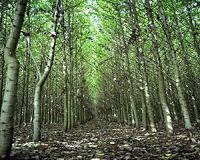| . |  |
. |
Barcelona, Spain (SPX) Dec 15, 2010 Spanish researchers have found fossils of Ordovician conodonts dating to between 446 and 444 million years ago for the first time in the western Mediterranean. The discovery of these very primitive marine vertebrates has helped scientists to reconstruct the palaeogeography of the Cordillera Betica mountain range. Their study shows that the mountain system in the south of the Iberian Peninsula was located alongside the Alps at that time. In 2006, a group of Andalusian geologists found the oldest fossils in the Cordillera Betica, dating from the late Ordovician period between 446 and 444 million years ago, in the Malaguide Complex in Ardales (Malaga). This was also the first solid evidence of Ordovician rocks in the Betica range. "The importance of this finding stems not only from the age of the fossils and the fact they make it possible to date the age of the materials they contain, but also from the valuable information they provide to help us reconstruct the tectonic history, the palaeogeography, and the geological history of the Cordillera Betica", Rosario Rodriguez-Canero, lead author of the study and a researcher at the Department of Stratigraphy and Palaeontology of the University of Granada, tells SINC. The study, which has been published in the latest issue of the journal Terra Nova, says that the fossils of conodonts, which are very rare and difficult to find, are "an essential tool" for unravelling the geological history of the Betica mountains and learning about the features of the environment in which they developed and the thermal history of the rocks in which they are found. The researchers analysed the characteristics of the conodont remains they found, the presence of certain species, and the absence of others, and compared these with others of a similar age found in the macizo iberico (essentially the western half of the Iberian Peninsula) and other ranges in the area. The results of the study show that, during the late Ordovician period, the Malaguide Complex was not to be found with the rest of the Iberian Peninsula along the edge of the palaeo-continent of Gondwana, "but was rather at a much lower latitude much closer to the Alps, with its Ordovician conodont fauna showing much closer similarities to the fauna of this area", says Rodriguez-Canero.
Tiny and essential fossils The fossilised remains usually found are not complete conodonts, but rather pieces of less than one millimetre in size, with a phosphate composition similar to that of vertebrate teeth. The conodonts had these in the cephalic region and used them to catch and grind up their food. "These teeth were the only mineralised pieces of conodonts, meaning they are generally the only remains to have fossilised, although complete conodont fossils have been found in other parts of the world", the geologist explains. The fossils found by the research team are not only the oldest in the Cordillera Betica, but are also the first remains of Ordovidician conodonts found in the entire western Mediterranean, from Gibraltar to the south of Italy.
Share This Article With Planet Earth
Related Links Spanish Foundation for Science and Technology Darwin Today At TerraDaily.com
 Scientists Unravel More Details Of Plant Cell-Wall Construction
Scientists Unravel More Details Of Plant Cell-Wall ConstructionUpton NY (SPX) Dec 15, 2010 One big challenge in converting plants to biofuels is that the very same molecules that keep plants standing up make it hard to break them down. Now scientists at the U.S. Department of Energy's (DOE) Brookhaven National Laboratory are unraveling details of how plant cells' structural supports - their cell walls - are made, with the hope of finding ways to change their composition for more effic ... read more |
|
| The content herein, unless otherwise known to be public domain, are Copyright 1995-2010 - SpaceDaily. AFP and UPI Wire Stories are copyright Agence France-Presse and United Press International. ESA Portal Reports are copyright European Space Agency. All NASA sourced material is public domain. Additional copyrights may apply in whole or part to other bona fide parties. Advertising does not imply endorsement,agreement or approval of any opinions, statements or information provided by SpaceDaily on any Web page published or hosted by SpaceDaily. Privacy Statement |